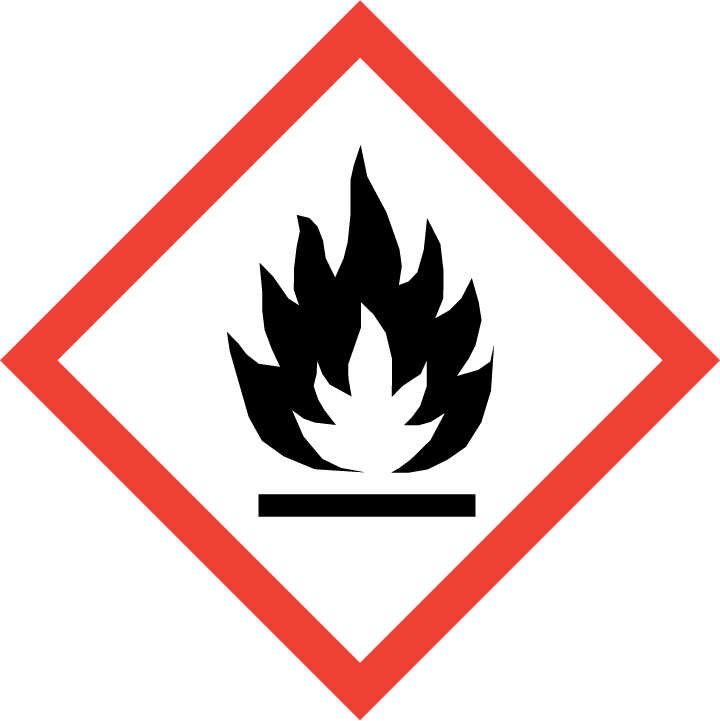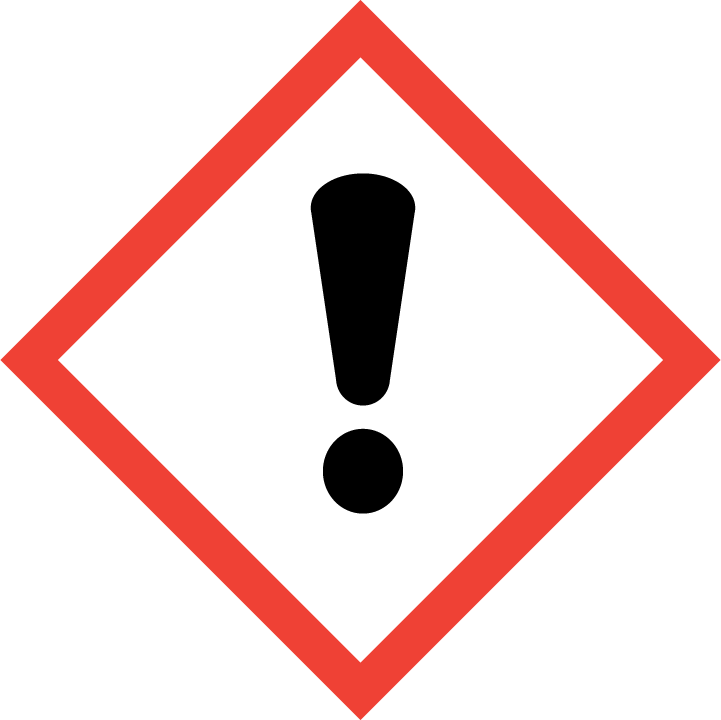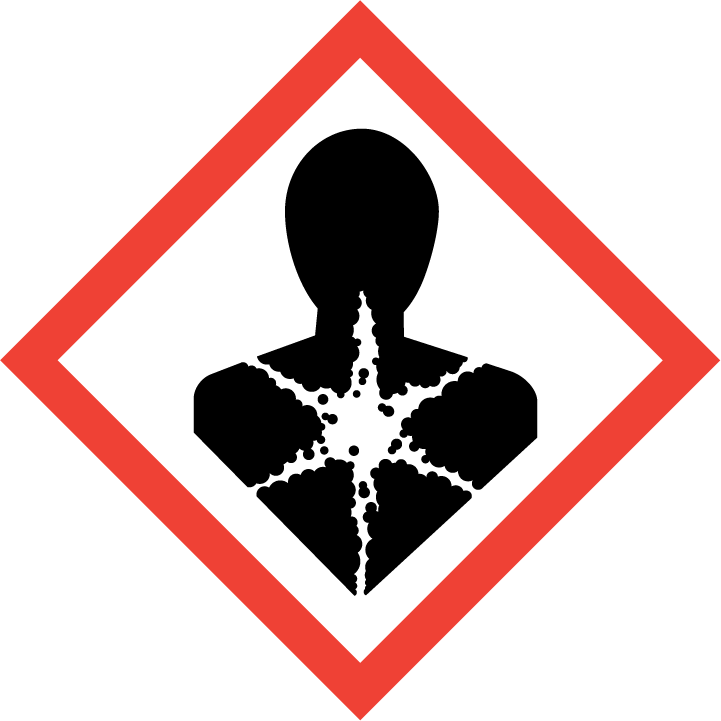SAFETY DATA SHEET
DPX Mountant for Microscopy
1. IDENTIFICATION
Product Identifiers
Product Name:
DPX Mountant
Other Names:
N/A
Product Number(s):
C06522-100, C06522-500, EMS13510, EMS13512
CAS Number:
-
Recommended use of the chemical and restriction on use
Laboratory use.
Company Details
ProSciTech Pty Ltd
11 Carlton Street
KIRWAN QLD 4817
Australia(07) 4773 9444www.proscitech.com
11 Carlton Street
KIRWAN QLD 4817
Australia(07) 4773 9444www.proscitech.com
Emergency Contact Details
ProSciTech Pty Ltd
11 Carlton Street
KIRWAN QLD 4817
Australia(07) 4773 9444www.proscitech.com
11 Carlton Street
KIRWAN QLD 4817
Australia(07) 4773 9444www.proscitech.com
2. HAZARDS IDENTIFICATION
Classification of the substance or mixture
Flammable liquids (Category 2), H225
Skin corrosion/irritation (Category 2), H315
Serious eye damage/eye irritation (Category 2), H319
Reproductive toxicity (Category 1B), H360
Specific target organ toxicity - single exposure (Category 3), Respiratory system, Central
nervous system, H335, H336
Specific target organ toxicity - repeated exposure, Inhalation (Category 2), Central nervous
system, Liver, Kidney, H373
Aspiration hazard (Category 1), H304
Skin corrosion/irritation (Category 2), H315
Serious eye damage/eye irritation (Category 2), H319
Reproductive toxicity (Category 1B), H360
Specific target organ toxicity - single exposure (Category 3), Respiratory system, Central
nervous system, H335, H336
Specific target organ toxicity - repeated exposure, Inhalation (Category 2), Central nervous
system, Liver, Kidney, H373
Aspiration hazard (Category 1), H304
Label Elements



Signal Words
Danger
Hazard Statement(s)
H225 Highly flammable liquid and vapour.
H304 May be fatal if swallowed and enters airways.
H315 Causes skin irritation.
H319 Causes serious eye irritation.
H335 May cause respiratory irritation.
H336 May cause drowsiness or dizziness.
H360 May damage fertility or the unborn child.
H373 May cause damage to organs (Central nervous system, Liver, (Kidney) through prolonged or repeated exposure if inhaled.
H304 May be fatal if swallowed and enters airways.
H315 Causes skin irritation.
H319 Causes serious eye irritation.
H335 May cause respiratory irritation.
H336 May cause drowsiness or dizziness.
H360 May damage fertility or the unborn child.
H373 May cause damage to organs (Central nervous system, Liver, (Kidney) through prolonged or repeated exposure if inhaled.
Precautionary Statement(s)
Prevention
P201 Obtain special instructions before use.
P210 Keep away from heat, hot surfaces, sparks, open flames and other ignition sources. No smoking.
P233 Keep container tightly closed.
P260 Do not breathe mist or vapours.
P264 Wash skin thoroughly after handling.
P280 Wear protective gloves/ protective clothing/ eye protection/ face protection.
Response
P301 + P310 IF SWALLOWED: Immediately call a POISON CENTER/ doctor.
P308 + P313 IF exposed or concerned: Get medical advice/ attention.
P331 Do NOT induce vomiting.
P370 + P378 In case of fire: Use dry sand, dry chemical or alcohol-resistant foam to extinguish.
Restricted to professional users.
P201 Obtain special instructions before use.
P210 Keep away from heat, hot surfaces, sparks, open flames and other ignition sources. No smoking.
P233 Keep container tightly closed.
P260 Do not breathe mist or vapours.
P264 Wash skin thoroughly after handling.
P280 Wear protective gloves/ protective clothing/ eye protection/ face protection.
Response
P301 + P310 IF SWALLOWED: Immediately call a POISON CENTER/ doctor.
P308 + P313 IF exposed or concerned: Get medical advice/ attention.
P331 Do NOT induce vomiting.
P370 + P378 In case of fire: Use dry sand, dry chemical or alcohol-resistant foam to extinguish.
Restricted to professional users.
Primary route(s) of entry
Not available.
Human Health
Inhalation:
Do not breathe mist or vapours.
Ingestion:
Immediately call a POISON CENTER/ doctor. Do NOT induce vomiting.
Eyes:
Not available.
Skin:
Wash skin thoroughly after handling. Wear protective gloves/ protective clothing/ eye protection/ face protection.
Environment
Not available.
3. COMPOSITION/INFORMATION ON INGREDIENTS
Name
CAS No.
Content (w/w)
Classification
Xylene
1330-20-7
>= 30 - < 50
%
Flam. Liq. 3, H226; Acute Tox. 4, H312; Acute Tox. 4, H332; Skin Irrit.2, H315
Toluene
108-88-3
>= 70 - < 90
%
Not Available
dibutyl phthalate
84-74-2
>= 10 - < 20
%
Not Available
4. FIRST AID MEASURES
Ingestion
If symptoms persist consult doctor.
Inhalation
Supply fresh air. If required, provide artificial respiration. Keep patient warm. Consult doctor if symptoms persist. In case of unconsciousness place patient stably in side position for transportation.
Skin Contact
In case of skin contact: Take off immediately all contaminated clothing. Rinse skin with water/ shower. Consult a physician.
Eye Contact
After eye contact: rinse out with plenty of water. Call in ophthalmologist. Remove contact lenses.
Other Information
Symptoms of poisoning may even occur after several hours; therefore medical observation for at least 48 hours after the accident.
Show this material safety data sheet to the doctor in attendance.
Show this material safety data sheet to the doctor in attendance.
5. FIREFIGHTING MEASURES
Suitable extinguishing equipment
CO₂, sand, extinguishing powder. Do not use water / Water with full jet.
Unsuitable extinguishing media
For this substance/mixture no limitations of extinguishing agents are given.
Unsuitable extinguishing media
For this substance/mixture no limitations of extinguishing agents are given.
HAZCHEM
Not available.
Special protective equipment and precautions for fire fighters
6. ACCIDENTAL RELEASE MEASURES
Personal precautions, protective equipment and emergency procedures
Advice for non-emergency personnel: Do not breathe vapours, aerosols. Avoid substance contact. Ensure adequate ventilation. Keep away from heat and sources of ignition.
Evacuate the danger area, observe emergency procedures, consult an expert.
For personal protection see section 8.
Evacuate the danger area, observe emergency procedures, consult an expert.
For personal protection see section 8.
Environmental precautions
Do not allow to enter sewers/ surface or ground water. Risk of explosion.
Methods and materials for containment and clean up
Cover drains. Collect, bind, and pump off spills. Observe possible material restrictions (see sections 7 and 10). Take up carefully with liquid-absorbent material (e.g. Chemizorb®). Dispose of properly. Clean up affected area.
7. HANDLING AND STORAGE
Precautions for safe handling
Advice on safe handling
Ensure good ventilation/exhaustion at the workplace.
Prevent formation of aerosols. Do not inhale substance/mixture.
Advice on protection against fire and explosion.
Keep away from open flames, hot surfaces and sources of ignition.Take precautionary measures against static discharge.
Hygiene measures
Immediately change contaminated clothing. Apply preventive skin protection. Wash hands and face after working with substance.
For precautions see section 2.2.
Ensure good ventilation/exhaustion at the workplace.
Prevent formation of aerosols. Do not inhale substance/mixture.
Advice on protection against fire and explosion.
Keep away from open flames, hot surfaces and sources of ignition.Take precautionary measures against static discharge.
Hygiene measures
Immediately change contaminated clothing. Apply preventive skin protection. Wash hands and face after working with substance.
For precautions see section 2.2.
Conditions for safe storage
Storage class
Storage class (TRGS 510): 3: Flammable liquids
8. EXPOSURE CONTROLS/PERSONAL PROTECTION
Exposure Standards
Material
TWA ppm
TWA mg/m3
STEL ppm
STEL mg/m3
1330-20-7 xylene
50 ppm
220 mg/m³
100 ppm
441 mg/m³
108-88-3 Toluene
50 ppm
191 mg/m³
150 ppm
574 mg/m³
84-74-2 dibutyl phthalate
5 mg/m³
Engineering controls
Immediately change contaminated clothing. Apply preventive skin protection. Wash hands and face after working with substance.
Personal protective equipment
Eye and face protection
Use equipment for eye protection tested and approved under appropriate
government standards such as NIOSH (US) or EN 166(EU). Safety glasses
Avoid contact with the skin.
Wear tightly sealed goggles.
government standards such as NIOSH (US) or EN 166(EU). Safety glasses
Avoid contact with the skin.
Wear tightly sealed goggles.
Skin protection
Avoid contact with the eyes and skin. Wear protective gloves. Required.
Body protection
Flame retardant antistatic protective clothing.
Immediately remove all soiled and contaminated clothing.
Immediately remove all soiled and contaminated clothing.
Respiratory protection
required when vapours/aerosols are generated.
Our recommendations on filtering respiratory protection are based on the following standards: DIN EN 143, DIN 14387 and other accompanying standards relating to the used respiratory protection system.
Our recommendations on filtering respiratory protection are based on the following standards: DIN EN 143, DIN 14387 and other accompanying standards relating to the used respiratory protection system.
9. PHYSICAL AND CHEMICAL PROPERTIES
General information
Appearance
Clear colourless liquid
Odour
Characteristic
pH
Not available.
Vapour Pressure
6.7 hPa at 20°C
Density
Not available.
Boiling Point
144 °C
Melting Point
Undetermined.
Solubility
Not miscible or difficult to mix with water.
Specific Gravity of Density
Not available.
Flash Point
27 °C
Flammable (Explosive) Limits
Product is not self igniting. Product is not explosive. However, formation of explosive air/vapour mixtures are possible. Explosion limits: Lower: 1.1 Vol % Upper: 7 Vol %
Ignition Temperature
390 °C (734 °F)
Formula
Not available.
10. STABILITY AND REACTIVITY
Reactivity
Vapors may form explosive mixture with air.
Chemical stability
The product is chemically stable under standard ambient conditions (room temperature).
Possibility of hazardous reactions
No dangerous reactions known.
Conditions to avoid
Warming.
Incompatible materials
Bases, Strong oxidising agents, acids, Chlorine, Nitrates.
11. TOXICOLOGICAL INFORMATION
Acute effects
Oral: No data available
Symptoms: Possible symptoms:, mucosal irritations, Cough, Shortness of breath, Possible
damages:, damage of respiratory tract
Dermal: No data available
Symptoms: Possible symptoms:, mucosal irritations, Cough, Shortness of breath, Possible
damages:, damage of respiratory tract
Dermal: No data available
Eye contact
Remarks: Mixture causes serious eye irritation.
Skin contact
Causes skin irritation.
Ingestion
No further relevant information available.
Inhalation
No further relevant information available.
Toxicity and irritation
Reproductive toxicitySuspected of damaging fertility. Suspected of damaging the unborn child.
Mixture may cause respiratory irritation.
Mixture may cause drowsiness or dizziness.
Mixture may cause damage to organs through prolonged or repeated exposure.
- Central nervous system, Liver, Kidney.
Additional Information:
Exposure can cause damage to the:, Central nervous system depression, Dermatitis, Anorexia., Bronchitis., Tremors, Blurred vision, Incoordination., Headache, Vomiting, Dizziness, Weakness, anemia, Prolonged or repeated exposure to skin causes defatting and dermatitis.
Other dangerous properties can not be excluded.
This substance should be handled with particular care.
Handle in accordance with good industrial hygiene and safety practice.
Mixture may cause respiratory irritation.
Mixture may cause drowsiness or dizziness.
Mixture may cause damage to organs through prolonged or repeated exposure.
- Central nervous system, Liver, Kidney.
Additional Information:
Exposure can cause damage to the:, Central nervous system depression, Dermatitis, Anorexia., Bronchitis., Tremors, Blurred vision, Incoordination., Headache, Vomiting, Dizziness, Weakness, anemia, Prolonged or repeated exposure to skin causes defatting and dermatitis.
Other dangerous properties can not be excluded.
This substance should be handled with particular care.
Handle in accordance with good industrial hygiene and safety practice.
12. ECOLOGICAL INFORMATION
Ecotoxicity
No further relevant information available.
Persistence and degradability
No further relevant information available.
Bioaccumulative potential
No further relevant information available.
Other adverse effects
Water hazard class 2 (German Regulation) (Self-assessment): hazardous for waterDo not allow product to reach ground water, water course or sewage system.Danger to drinking water if even small quantities leak into the ground.
13. DISPOSAL CONSIDERATIONS
General information
Waste material must be disposed of in accordance with the national and local regulations.
Leave chemicals in original containers. No mixing with other waste. Handle uncleaned
containers like the product itself.
Leave chemicals in original containers. No mixing with other waste. Handle uncleaned
containers like the product itself.
14. TRANSPORT INFORMATION
ADG label required

HAZCHEM
Not available.
UN Number
UN1866
Proper shipping name
1866 RESIN SOLUTION
Transport hazard class
3 Flammable liquids.
Packing group
PGIII
Environmental hazard
Product contains environmentally hazardous substances:dibutyl phthalate
Special precautions for users
Warning: Flammable liquids.
Danger code (Kemler): 33
EMS Number: F-E,S-E·
Stowage Category A
Danger code (Kemler): 33
EMS Number: F-E,S-E·
Stowage Category A
Additional information
ADR
Limited quantities (LQ) 5L
Excepted quantities (EQ)
Code: E1
Maximum net quantity per inner packaging: 30 mL
Maximum net quantity per outer packaging: 1000 mL
Transport category 3
Tunnel restriction code D/E
IMDG
Limited quantities (LQ) 5L
Excepted quantities (EQ)
Code: E1
Maximum net quantity per inner packaging: 30 mL
Maximum net quantity per outer packaging: 1000 ml
Limited quantities (LQ) 5L
Excepted quantities (EQ)
Code: E1
Maximum net quantity per inner packaging: 30 mL
Maximum net quantity per outer packaging: 1000 mL
Transport category 3
Tunnel restriction code D/E
IMDG
Limited quantities (LQ) 5L
Excepted quantities (EQ)
Code: E1
Maximum net quantity per inner packaging: 30 mL
Maximum net quantity per outer packaging: 1000 ml
15. REGULATORY INFORMATION
Poisons Schedule Number
No information available.
Other Information
No further relevant information available.
16. OTHER INFORMATION
SDS preparation date
26 August 2025
Comments
Full text of H-Statements referred to under sections 2 and 3.
H225 Highly flammable liquid and vapour.
H226 Flammable liquid and vapour.
H304 May be fatal if swallowed and enters airways.
H312 Harmful in contact with skin.
H315 Causes skin irritation.
H319 Causes serious eye irritation.
H332 Harmful if inhaled.
H335 May cause respiratory irritation.
H336 May cause drowsiness or dizziness.
H360 May damage fertility or the unborn child.
H361 Suspected of damaging fertility or the unborn child.
H373 May cause damage to organs through prolonged or repeated exposure if
inhaled.
H400 Very toxic to aquatic life.
H411 Toxic to aquatic life with long lasting effects.
H225 Highly flammable liquid and vapour.
H226 Flammable liquid and vapour.
H304 May be fatal if swallowed and enters airways.
H312 Harmful in contact with skin.
H315 Causes skin irritation.
H319 Causes serious eye irritation.
H332 Harmful if inhaled.
H335 May cause respiratory irritation.
H336 May cause drowsiness or dizziness.
H360 May damage fertility or the unborn child.
H361 Suspected of damaging fertility or the unborn child.
H373 May cause damage to organs through prolonged or repeated exposure if
inhaled.
H400 Very toxic to aquatic life.
H411 Toxic to aquatic life with long lasting effects.
References
Sigma-Aldrich Safety Data Sheet, DPX Mountant for Histology https://www.sigmaaldrich.com/AU/en/sds/sigma/06522?userType=anonymous 22/03/2025
EMS Safety data Sheet DPX Mounting Medium https://www.emsdiasum.com/docs/technical/msds/13510.pdf 05/12/2022
EMS Safety data Sheet DPX Mounting Medium https://www.emsdiasum.com/docs/technical/msds/13510.pdf 05/12/2022
This Safety Data Sheet (SDS) has been prepared in compliance with the Preparation of Safety Data Sheets for Hazardous Chemicals Code of Practice February 2016. It is the user's responsibility to determine the suitability of this information for adoption of necessary safety precautions. The information published in this SDS has been compiled from the publications listed in Section 16: to the best of our ability and knowledge these publications are considered accurate. We reserve the right to revise Safety Data Sheets as new information becomes available. Copies may be made for non-profit use.